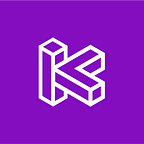Introduction
The world of decentralized finance (DeFi) has seen exponential growth in recent years, and stablecoins, which are cryptocurrencies designed to maintain a stable value, play a crucial role in this ecosystem. The two most prominent stablecoins by market capitalization are USDT (Tether) and USDC (Circle). With the recent implementation of the MiCA (Markets in Crypto Assets) law on July 1, which regulates crypto asset and stablecoin markets in Europe, it is more relevant than ever to examine these two options.
In this article, we will explore the differences between USDT and USDC, analyze how each complies with the MiCA regulation, and discuss why many in the DeFi world prefer USDC for its transparency.
What is the MiCA Law?
The MiCA law, which came into force on July 1, is a European regulation designed to establish a clear legal framework for crypto assets and stablecoins. It particularly focuses on EMTs (e-money tokens), which are assets designed to maintain a stable value relative to a legal fiat currency. This regulation aims to protect consumers and ensure financial stability.
USDT vs USDC: General Comparison
Tether (USDT)
Tether is the most capitalized and widely used stablecoin in the market. However, it has faced criticism for its lack of transparency and irregular audits. Despite being one of the most profitable companies in the world, with a net profit of $6.2 billion in 2023 and only 60 employees, USDT does not always provide clear and detailed reports on its reserves.
Circle (USDC)
Circle, on the other hand, issues USDC and is known for its transparency and regulatory compliance. Circle publishes detailed monthly reports on its reserves, offering greater trust to users. USDC complies with the MiCA regulation in Europe through EURC, demonstrating its commitment to transparency and stability.
Transparency as a Key Factor
Reserve Reports
One of the main reasons why USDC is preferred in the DeFi world is its transparency. Circle provides detailed monthly reports of its reserves, which are mainly composed of short-term U.S. debt and cash in regulated financial institutions. This level of detail and frequency in reporting is crucial for users looking for a reliable and secure stablecoin.
In contrast, Tether publishes its reserve reports quarterly and has been criticized for the lack of clarity in these reports. Despite having a larger capitalization and a broader market, the lack of transparency has led to less trust among users.
Composition of Reserves
USDC’s reserves are mostly composed of short-term U.S. debt and cash, providing a solid and stable base. Tether, however, maintains approximately 80% of its reserves in short-term U.S. debt and the rest in other investments, such as loans and bitcoin. This diversity in Tether’s reserves can be seen as an additional risk by some users.
MiCA Implementation and Compliance
USDC and MiCA
USDC complies with the MiCA regulation in Europe through EURC. This compliance with European regulations shows Circle’s commitment to transparency and stability, making USDC a preferred option for those seeking to comply with regulations and maintain trust in their stablecoin.
USDT and MiCA
USDT, on the other hand, has not yet demonstrated the same level of compliance with the MiCA regulation. Although it remains a popular choice due to its broad acceptance and liquidity, the lack of regulatory compliance could be a decisive factor for some users seeking long-term stability and security.
Use Cases in DeFi
In the DeFi ecosystem, transparency and trust are fundamental. Many users and platforms prefer USDC due to the monthly reports and clarity in the composition of its reserves. This preference is reflected in the adoption of USDC in numerous DeFi protocols, where security and stability are paramount.
Examples of Use
- Lending Platforms: USDC is widely used in DeFi lending platforms due to its transparency and stability.
- Decentralized Exchanges (DEXs): USDC is a popular choice in DEXs, where trust in the stablecoin is crucial for secure transactions.
- Payments and Remittances: The clarity in the composition of USDC’s reserves makes it ideal for payments and remittances, where stability is key.
Conclusion: Which is the Best Option?
Choosing between USDT and USDC largely depends on user priorities. If transparency and regulatory compliance are critical factors, USDC emerges as the preferred option. Circle not only provides detailed monthly reports but also complies with the MiCA regulation, ensuring greater trust and stability.
On the other hand, USDT remains the most capitalized and widely used stablecoin, offering great liquidity and acceptance. However, the lack of transparency and irregular compliance can be a point of concern for some users.
In the world of decentralized finance, where transparency and trust are essential, USDC seems to be the logical choice for those who value these aspects. However, the final decision will depend on individual needs and priorities.
Summary of Circle’s Latest Report
For those interested in a detailed analysis, here is the summary of Circle’s latest report:
- Report Date: May 7, 2024 and May 31, 2024
- USDC in Circulation:
- May 7: 33,165,344,461
- May 31: 32,289,248,060
- Fair Value of USDC Reserve Assets:
- May 7: $33,216,419,857
- May 31: $32,340,643,744
Composition of Reserves:
- U.S. Treasury Securities: Various maturity dates in June and July 2024.
- U.S. Treasury Repurchase Agreements: $16.49 billion as of May 31, 2024.
- Cash in Circle Reserve Fund: $1.004 billion as of May 31, 2024.
- Cash in regulated financial institutions: $3.357 billion as of May 31, 2024.
The clear and detailed composition of the reserves provides a solid and reliable base for USDC users.
Final Words
In conclusion, both USDT and USDC have their own merits and drawbacks. However, in a regulated environment like Europe and within the DeFi ecosystem, USDC stands out for its transparency and regulatory compliance. The choice between the two stablecoins will depend on the needs and priorities of each user, but the clarity and trust that USDC offers make it a preferred option for many.
#################### https://linktr.ee/koryntia ####################
